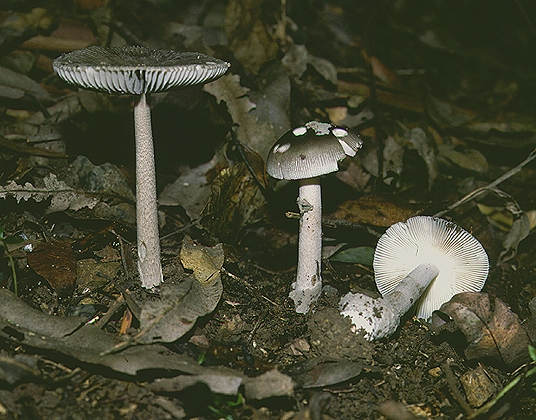
Amanita punctata (Cleland & Cheel) D.A.Reid

Common name: None.
Description: Grey to grey-brown caps of this species may reach up to 8 cm in diameter and are usually more or less convex, although they may be plane when fully expanded. They are usually smooth and dry, but the margins are very strongly folded. There are often white fragments of veil on the cap surface. The gills are white to slightly greyish and just reach the stem; the margins are distinctly grey. The hollow, greyish stem is up to 10 cm long and about 1 cm thick. Close examination of the stem surface shows that it is covered with tiny flecks of grey with the white stem tissues showing between the flecks. There is no ring, and the base of the stem is sheathed in a large, loose sack like structure (volva) which is usually in shades of grey.
The spores measure 1012.5 × 9.511.5 µm and are more or less globose, smooth and colourless.
Substratum: Amanita punctata can be found on soil among litter in mixed forest or eucalypt forest. Some Queensland collections indicate that the species may also be found in Nothofagus moorei (Antarctic Beech) forest.
Distribution: Known from Queensland, New South Wales, Victoria and Tasmania.
Notes: This species belongs to a group within the genus Amanita which always has strongly folded cap margins and no ring on the stem. Many of the species in this group are used as food overseas but no tests have been done on the Australian species. Experimentation is not recommended as the genus Amanita also contains one of the world's most toxic toadstools, the Death Cap, Amanita phalloides.
